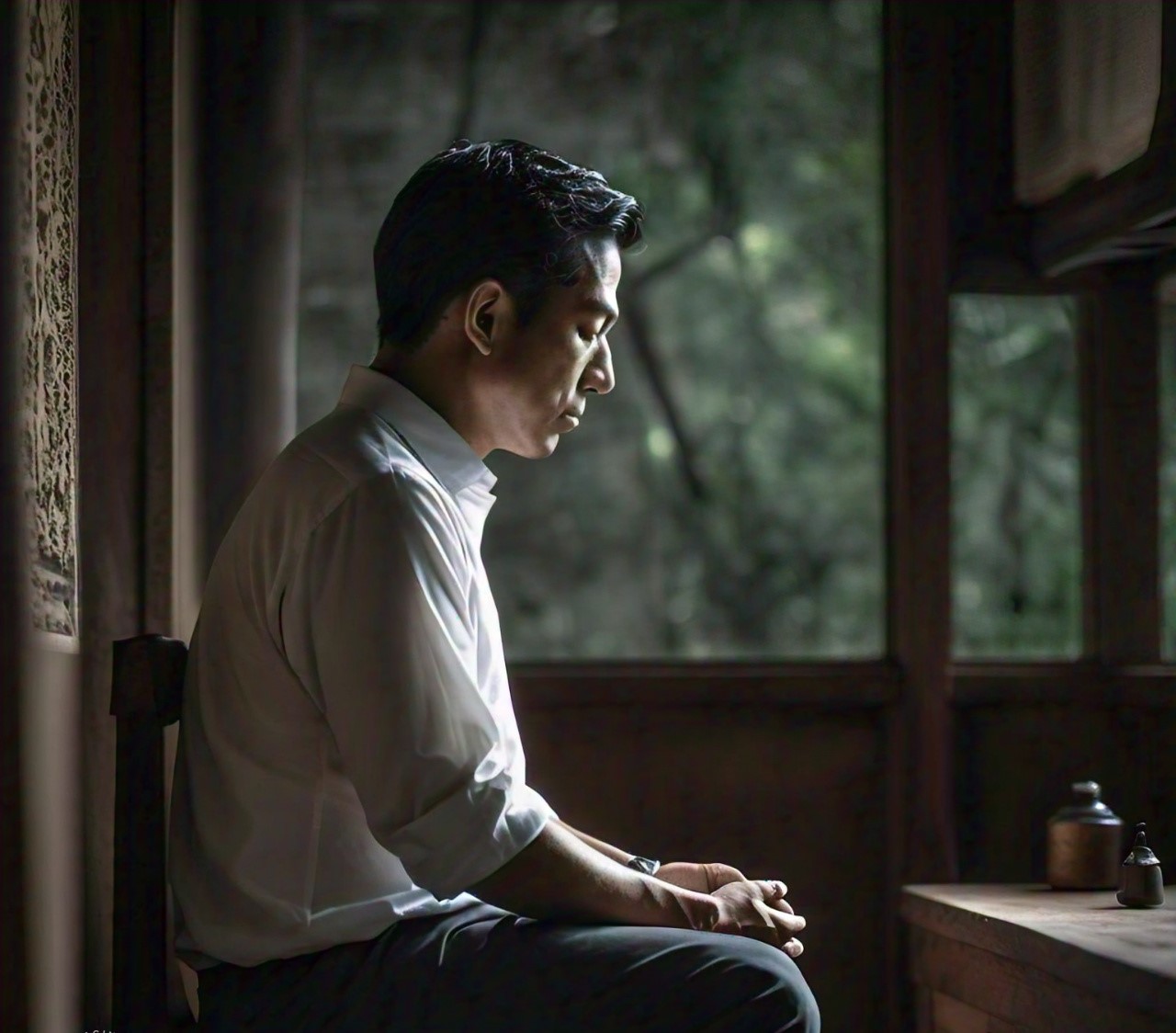Why do you repeat certain patterns in your relationships? According to the attachment theory, this could be due to your childhood experiences. Attachment theory suggests that the relationship you have or had with your caregiver could be a blueprint for how you develop and form emotional bonds with other people later on.
Based on these connections, you may be classified into four primary attachment types: secure, anxious, fearful avoidant, and dismissive-avoidant. The style of attachment that is dismissive-avoidant is easily identifiable as it is evident in someone who is more likely to avoid intimacy and would rather be independent.
What is Attachment?
Attachment, also known as the bond, is the emotional bond you developed as a child with your primary caregiver, most likely your mother.
In accordance with the theory of attachment developed by British psychiatrist John Bowlby and American psychologist Mary Ainsworth, the quality of the bonding you feel in the first few years of your relationship determines how you connect to others and react to intimacy throughout your life.

Attachment Theory Styles: Types
Attachment theory, as developed by psychiatrist John Bowlby, suggests that infants are predisposed to build solid emotional connections with the primary caregiver due to proximity increases their odds of survival. The behavior of attachment is patterns, referred to as an attachment type. There are four types of attachment.
Where you fall on the spectrum depends on your environment and how your needs were met:
Secure Attachment
You’re fine being on your own, but you also enjoy being in relationships. The vulnerability and intimacy of your relationships don’t worry you, nor do separation and boundaries. These characteristics enable you to seek assistance when needed and be accountable for your behavior and feelings.
Disorganized/disoriented attachment
You are having trouble calming your feelings, which can leave you susceptible to violent outbursts. You aren’t confident and uncomfortable in intimate relationships, even though you desire one. The traumas you experienced in your childhood might have made you feel insecure and afraid of being hurt. It is also known by the term fearful avoidant attachment.
Ambivalent attachment
Sometimes referred to as anxious or anxiety-preoccupied attachment, This type of attachment may cause you to crave the attention and affection of people close to you. You might appear “needy,” but you are, in fact, worried that your partner doesn’t like you, and this causes you to doubt your trust in them. Anything you perceive as an issue in the relationship can cause you to react in a way that is over the top or manipulate your partner into staying with you.
Dismissive-avoidant attachment
You are incredibly independent and feel at ease in your own space. You’re uncomfortable with vulnerability and intimacy when you are with others, so you try to avoid the subject by keeping others away from you. You’re wary of being a victim, so you may create the illusion of distance and remain independent by keeping your secrets, denying your partner’s concerns about your relationship by calling the person clingy, or even ending the relationship completely.
What Is Dismissive-Avoidant Attachment Style?
The style of attachment that is dismissive and avoidant, which is often referred to as avoidant attachment for short, is an attachment type that involves a high degree of avoidance when it comes to intimacy and a lack of anxiety over abandonment. As intimacy grows, the avoidant pattern is expressed, and employ distancing techniques to avoid discomfort.
It is usually a result of perceived denial from caregivers during the first 18 months of their lives. The caregivers could have been as if they were not emotionally available to their children and avoided emotions and intimate relationships.
The Cause of Dismissive Avoidant Attachment
Since the theory of attachment is founded on how we interact with our parents and caregivers in our early years, It is logical that the root causes of this type of attachment can be traced back to young years of age.
Certain aspects that can play a part in causing avoidance of dismissive attachments include:
Dismissive parenting
It’s believed that dismissive-avoidant attachment occurs because a baby or small child doesn’t get the attention or care they need from their parents or caregivers.
Insufficient responsiveness
Since parents are obnoxious and unresponsive, the child or infant realizes that expressing needs does not guarantee that they will be taken care of.
Unmet needs
When the needs of a child aren’t taken care of by their caregivers, it can lead to feelings that others don’t have the capacity to adequately care for them.
While adult attachment patterns are not always identical to childhood attachment patterns, research shows that they are very similar for a large number of people.
Avoidant Attachment in Childhood
Early on in life, avoidant attachment occurs when an attachment figure habitually rejects a baby’s connection-seeking behaviors during distress. These parents are emotionally rigid and angry toward their infants. It’s not always because they intentionally resisted their child’s desires or needs, but more likely that they did not understand their child’s needs. So when their child longed for love, support, and connection, the caregivers might have shut down emotionally and then withdrawn from them.
Infants who are insecure and avoidant generally view other people as cold, untrustworthy, or manipulative. They form a negative image of their peers and view relationships as insecure and unstable.
To safeguard themselves, they stay away from close relations and maintain a psychological distance. In the face of stressful situations, they shut down or block their attachment system instead of seeking out comfort from others.
Avoidant Attachment in Adults
Twenty years of study findings indicate that 72% of adults share the same attachment patterns as they did when they were children. When attachment categories change typically, they are often associated with traumatic experiences.
Being raised with an avoidant attachment style tends to lead to a dismissive and avoidant attachment pattern in adulthood. 25% percent of adults exhibit this type of behavior, according to studies.
Beware of letting the dismissive attachment style confuse you. Even though people with a dismissive avoidant attachment may appear extremely self-confident, their problems usually result from low self-esteem, just like someone with an anxious attachment.
Dismissive Attachment behavior looks like this:
- Self-sufficiency.
- The tendency is to stay clear of displaying emotions.
- It is sometimes possible to behave in a narcissistic way.
- An inability to prioritize romantic relationships.
- Intentionally causing aggravation to an individual so that the person will not want to get close.
- The tendency to become overly worried about control.
Signs of Dismissive Avoidant Attachment
Numerous studies have revealed that an adult’s style of attachment affects the nature of their relationships. This kind of style is in negative correlation with different aspects of an adult’s closest relationships.
There are two main dimensions: anxiety and avoidance, which underline the various attachment styles that lead to various patterns of behavior in life.
A slack-minded woman or man is likely to get high marks on the scale for avoidance and low on the anxiety scale.
Short flings
Casual relationships are usually low-risk and allow those who are dismissive to experience a sense of intimacy without feeling overwhelmed. They like fewer commitments in relationships; However, once intimacy grows deeper through personal concerns and demands, the person avoids and, with dismissiveness, tends to fade away and slow the pace. Avoidant adults generally prefer to keep relationships to a surface level. If someone begins to challenge them in this direction, they pull up the wall, and they will shut down and then retreat quickly.
Fear of intimacy
Problems with attachment in the beginning period of life left some people depressed and with anxiety about intimacy. They tend to avoid feeling close in relationships.
Being highly self-sufficient
A person with a dismissive-avoidant personality may over-emphasize their self-reliance and avoid the deep bond to a person or a relationship. This is a commonality that occurs when you study fearful-avoidant and dismissive-avoidant styles of attachment.
Both respond negatively to emotional connections. But, people who avoid emotional connections do this because they have a negative opinion of other people or are afraid of dependence. Someone who is fearful may not want emotional support due to their low self-esteem makes it appear that the relationship will have a certain quick and swift conclusion.
Affection is a breeze of cold and hot
The relationship could begin as normal, but when the relationship develops, the dismissive person begins to withdraw, which can cause their partner to doubt the bond and feel unimportant. If the partner who is dismissive and avoidant feels emotionally stable again, they reach for a re-connection and then duplicate the pattern since they’ve never addressed their weaknesses.
Not prioritizing romantic relationships
Sometimes it is more beneficial to focus on your development than trying to achieve romantic goals. You can devote your time to work, studying, or figuring out your self-identity. If a person who has a tendency to avoid and dismissive relationships decides to pursue a relationship, they could discover a new partner and then find it difficult to establish a healthy relationship.
Prioritizing involves putting efforts into:
- The time to schedule calls
- Planning dates
- Be sure to message your partner to text them back
- Inviting your companion to join you in activities
- Utilizing your partner’s love language
Not doing or ignoring these tasks could result from the fear of being vulnerable because of an inherent fear of rejection.
Low tolerance for conflict
Since they aren’t afraid of being abandoned (and anticipate it in a lot of instances), when the relationship becomes challenging, people who are dismissive look for the opportunity to leave. Their partner may be devastated due to their cold stance; However, their stance isn’t intentional to hurt. Instead, the person who avoids and is dismissive responds to the fear of rejection, and they close off themselves prematurely.
Nitpicking the connection
If someone can get close to them, dismissive-avoidant behavior may try to sabotage the relationship by focusing on minor things like their partner’s habits, behavior, or appearance.
Do not provide or receive social support
A dismissive-avoidant person hardly forms supportive relationships. They do not feel comfortable offering support to romantic partners and don’t feel obligated to offer support. Their perception of people who seek help can be that they’re weak, dependent, emotionally unstable, and undeveloped.
Views vulnerability as a weakness
Because they’re innately uncomfortable when it comes to vulnerability, a person with an attachment style that is dismissive and avoidant may criticize others who display their emotions and feelings excessively. Their negative view of others can cause a general distrust of other people. They are often considered self-centered because they believe in themselves too much and judge others harshly.
Lack of trust
They are prone to distrust other people; This is why they stay away from interactions with other people and shut off their reaction system to cope with stress. It is probable that they reduce any relationship or emotion in a relationship with a partner, whether positive or negative.
Overly criticizing other people
Emotional connections can occur without the need to be close to a person. Your values and goals may naturally align, but it does not feel right for someone scared of being close to others.
A person who has a disengaged-avoidant personality might be prone to developing an egocentric behavior to stop that from occurring. Public criticism of others using derogatory phrases and actions is a method of shoving people away.
Reduces romantic connections
The dismissive-avoidant may secretly want a relationship but actively resist making love happen because they don’t know how to trust others. Instead of embracing the possibilities of a connection, they’re likely to impose strict boundaries that block potential partners from entering their lives in a meaningful way.
High self-esteem and confidence
While avoidant individuals distrust other people, they tend to have higher self-esteem. They generally have a positive perception of themselves.
Highly successful
Because of the doubt about the ability of others to provide psychological support, they put their money more heavily into their own talents or achievements. These people are often workaholics who lack satisfaction in their intimate relationships.
Is Dismissive-Avoidant Attachment Style Toxic?
Intimacy with emotion is an essential element of building relationships. Therefore, staying clear of it could pose serious problems. At first, it may appear that avoiding emotional reactions is safe since there are no conflicts or difficult emotions that need to be addressed. Yet, all humans must be connected with others in one way or another, so going in a stoic, dismissive-avoidant manner could harm relationships.
However, this attachment style will not necessarily cause harm in a relationship that only needs a little emotion or openness, for example, a casual relationship.
Though these behaviors often seem like a conscious choice, the reasoning behind them is initially rooted in the subconscious. People who have a dismissive-avoidant style might not realize that the reason why they pull people away originates from their childhood experiences. This is why knowing your personal attachment style is crucial and beneficial to your emotional development.
The Advantages of Avoidant Attachment
It’s normal to think you’ll only have the bad effects of an avoidant approach to attachment, but it may surprise you that there could be several benefits.
Based on research findings, 33-50 percent of people are insecurely attached. This shockingly high proportion reveals the paradox of how people perform successfully despite their insecure attachment. So, some advantages come with having an insecure attachment.
Positive Psychology is the research of aspects that make life worthy of living. Applying positive psychology strategies can allow you to develop your strengths, boost your self-confidence, and enhance how you interact with others. But, before you can improve your skills, you will need some help understanding the benefits of dismissive avoidant attachment. The advantages include:
Relationship dismissive avoidant attachment advantages
- They are not dependent on their partner
- Not suffocating in a relationship
- Most likely to respect their partners’ boundaries
- Independent and individual
Friendship dismissive avoidant attachment advantages
- Ability to be friendly and popular
- Confident in what they can offer others
- Are friendly with new acquaintances
- Don’t bother their friends for their time
- Won’t require their friends to disclose their emotions
- Lead with logic instead of emotions
Workplace dismissive avoidant attachment advantages
- Rapid to react to threats to their surroundings
- Remain less dependent on others to provide support
- Highly independent
- Concentrate their attention on their job
- More likely to feel confident about their abilities and choices
- More likely to strive for professional achievement
Which of the avoidant attachment superpowers do you identify with the most? Attachment styles typically fall on diverse. The degree to which you can identify with your attachment style will likely differ from another.
Dismissive Avoidant Attachment Disadvantages
Being independent, as well as teaching children to be independent, is essential for survival. Still, the avoidant-dismissive type isn’t ideal for anyone, and it can significantly impact the person who avoids and dismisses others in their lives.
You May Not Get Your Needs Met
Refraining from speaking up and being dismissive could result in not having your requirements met. In general, human beings are looking for the ability to connect with others, and all of us need to be looked after at some point.
Because people with this attachment type have a lot of difficulty reaching out to others, dismissive behavior can make it difficult to acknowledge that you need assistance and support. It can result in you suffering in silence.
Your Loved Ones May Feel Neglected
Friends, partners, and family members of a person with a dismissive and avoidant attachment style may not have their needs met in the relationship.
When it comes to a romantic relationship, one might often feel abandoned or distant from their loved ones and feel lonely in the course of a relationship. The person avoiding may feel secure with their behavior, and that’s how we all want to feel. However, those on the other side certainly won’t.
People generally are more comfortable when they feel connected to other people. However, this isn’t always the case for people with a dismissive attachment style; They may feel more secure with more distance.
You Might Be Unable to Tolerate Conflict
People who are dismissive and avoidant aren’t afraid of being abandoned or the ending of an affair. When conflict arises, those with this style of attachment often begin looking for the quickest method to break up with their partner.
The shortening of the relationship prevents the person from coping with the stress of conflict and the anxiety that they’ll be first rejected. This approach can reduce stress in the short run. However, it makes it difficult to sustain long-lasting relationships and can lead to loneliness and social isolation over the long run.
Read More: How To Stop Being Naive: Highly Effective Tips
Read More: Habituation: What It Means and How It Operates in Our Daily Lives
How to Build a Healthier Attachment Style
You may be content with your feeling of freedom if you oppose an apathetic attachment style. But, in the future, you might be looking for an intimate relationship or desire a stronger bond with the members of your household.
People with a dismissive and avoidant attachment style may find love and develop long-lasting romantic relationships. But, you must be aware of your tendencies and work on developing more effective coping strategies.
Prioritize Honest Communication With Loved Ones
It’s possible to have close relationships without changing yourself if this attachment style feels comfortable and good for you, but it requires a lot of work and communication to ensure expectations are being communicated and understood.
Improve your nonverbal communication skills.
A single of the significant conclusions drawn through attachment theories is that the adult relationship, just like the initial relationship with your main caregiver, is also based on nonverbal ways of communicating.
While you may not realize it, as you interact with people, you constantly give and receive signals that are not spoken, through the gestures you use, as well as your posture, how you look at them, and so on. These non-verbal signals send out strong messages regarding how you feel.
Boost your emotional intelligence
Emotional intelligence (otherwise called emotional quotient, or EQ) can be defined as the capacity to recognize, utilize and manage your own emotions in positive ways so that you can connect with your loved ones to communicate more effectively and handle conflicts in a better manner.
In addition to helping improve your ability to read and communicate nonverbally, developing emotional intelligence will help to improve the quality of a relationship. If you can understand your emotions and know how to manage them, you’ll be better at communicating your wants and emotions to your spouse and also understand how your partner is really experiencing too.
Many people are familiar with IQ (Intelligence Quotient). It is a test that measures intellectual intelligence. Higher intelligence scores indicate higher cognitive abilities or the ability to understand and learn. Higher IQs mean that people with higher IQs will do better academically, even though they don’t have to exert as much mental effort as those with lower IQs.
It is logical to assume that people with higher intelligence are more likely to be successful in work and life. This assumption is incorrect.
Continue Reading: How Emotionally Intelligent Are You, And How to Build It?
Face conflict with grace
If their attachment mode triggers, they’ll be tempted to flee. Instead, you should encourage them to discuss their feelings with you. It is helpful to create an environment in which they can express their feelings without fear of being rejected or embarrassed.
Communicate your need for space
People who exhibit a dismissive, avoidant attachment type often feel better after escaping an emotionally charged event. This could be a healthy outlet for anyone as people frequently say things they aren’t meant to say when they are acting based on their emotions.
However, it is important to keep in mind to resume the conversation. If someone has felt disconnected from you for a lengthy period might be skeptical that you’ll return to discuss issues. Make it clear that you’re taking a bit of time but that you’ll be back to discuss things.
Try to over-communicate
You can also alter the neural pathways in your brain that seek distance by sharing with the other person the thoughts that are going through your head. This method is similar to stream-of-consciousness journaling. The goal is to talk through your vulnerability in front of others and address the root issue of attachment that is dismissive than closing yourself off.
Challenge Your Habitual Responses
When you realize these tendencies in yourself, it’s essential to challenge and alter these habits slowly. Instead of establishing strict boundaries and refusing to do something, make an effort to be conscious of saying yes to the things you normally turn down.
For instance, if you usually avoid showing your vulnerability, seek out opportunities to discuss your thoughts and feelings with your partner instead of keeping them to yourself.
Help them toward positivity
Even if you can comfort your partner with a dismissive relationship style, it’s essential to help them develop confidence in themselves and their good qualities in relationships. It can begin by making a conscious affirmation practice regarding themselves as a person (not the things they are doing) and then exposing them to situations that strengthen the relationship as a couple.
Establish relationships with those who are secure
A relationship with someone else who has an insecure attachment style could create a relationship that is out of sync, rocky, confused, and even a painful experience at worst. Although you may be able to work through your fears but you should seek out an individual with a stable attachment style that can help move away from negative ways of thinking and behavior.
A positive, supportive relationship with those who make you feel loved could play a crucial role in establishing your confidence.
Utilize Mindfulness
A mindfulness practice, or learning to be more focused on the present moment, can aid in gaining a greater awareness of your actions and feelings. When you are hostile, defiant, or avoiding, stop and consider the way you feel at this moment.
Instead of simply trying to push emotions away, try naming them and acknowledging the fact that they exist. This can aid you in accepting feelings of sadness which will make you less inclined to walk away from your loved ones.
Know it’s not about you
Understanding how your partner’s brain works and responding with love in a manner that recognizes the pattern of their relationship will help them heal.
Resolve any childhood trauma
Childhood trauma may result from any situation that affects your sense of security, for example, a secluded or unstable environment at home and being separated from the primary caregiver, disease neglect, or abuse. If childhood trauma isn’t resolved, feelings of fear, fear, and despair may persist into adulthood.
If your experience was several years ago, there are steps you can take to heal the trauma, find your emotional equilibrium and develop trust and reconnect in relationships.
Conclusion
If you exhibit a dismissive-avoidant attachment style, It’s more likely that your needs weren’t met adequately in your early years.
If you wish to alter the way you connect with others is possible to make it happen, and more meaningful relationships and connections could be on your horizon.



